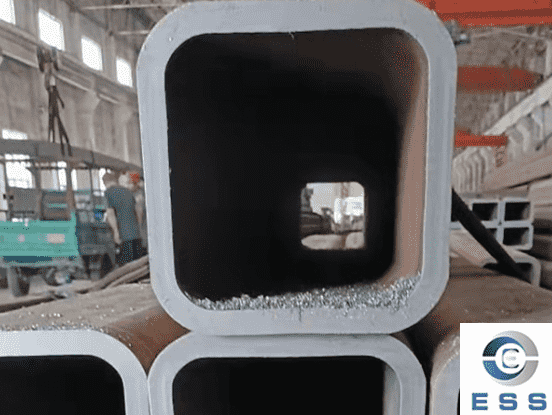
Definition of seamless precision tube
Precision tube is a high-precision pipe with very high dimensional accuracy and surface finish. Precision tubes are widely used in machinery, automobiles, aerospace, electronics, medical and other fields, such as high-pressure oil pipes, automotive oil pipes, aerospace hydraulic pipes, electronic components, etc.
Concept of roughness
Roughness refers to the irregularity of the surface or contour within a certain length, usually expressed by the Ra value. The smaller the Ra value, the smoother the surface. For seamless steel precision tubes, their roughness directly affects the surface finish and use effect. Generally speaking, the smaller the roughness, the higher the surface finish. For some products that require high precision, such as high-precision mechanical parts and instruments, the roughness of precision tubes is required to be higher.
Common measurement methods include optical instrument method, electronic scanning method and projector method. When measuring, pay attention to selecting the appropriate measurement range and sampling length to obtain accurate surface roughness data.
Influencing factors
The surface of the tube with large roughness is not smooth, and it is easy to form contact stress on the contact surface, which affects the service life and precision of the tube. At the same time, for some tubes that need to be polished on the inner wall, their roughness has a great impact on the polishing effect. Even if the tube with too large roughness is polished, it is difficult to achieve the required surface finish.
1. Processing technology: The processing technology of precision tubes has an important influence on surface roughness. Reasonable selection of processing methods, process parameters and equipment accuracy can control the surface roughness of precision tubes.
2. Material selection: Different materials have different surface roughness. Selecting suitable materials can achieve the required surface roughness requirements.
3. Surface treatment: Surface treatment methods such as chemical polishing and mechanical polishing can effectively improve the surface roughness and smoothness of precision tubes.
What does roughness affect?
1. Surface roughness and fluid resistance: The greater the surface roughness, the greater the friction resistance of the fluid in the pipeline, resulting in increased fluid flow resistance and increased energy consumption. Therefore, for application scenarios that require smooth fluid flow, it is necessary to select precision tube materials with smaller surface roughness.
2. Surface roughness and corrosiveness: The increase in surface roughness will increase the effective contact area of the pipe surface, making it easier for corrosive media to erode the pipe surface, thereby reducing the corrosion resistance of the precision tube. Therefore, when using precision tubes in corrosive environments, attention should be paid to the control of surface roughness.
3. Surface roughness and sealing: Surface roughness has a direct impact on sealing performance. Large surface roughness will make it difficult for the seal to fit tightly, thus affecting the sealing effect. Therefore, in application scenarios that require higher sealing, precision tubes with smaller surface roughness need to be selected.
Is it necessary to mark the surface roughness of precision tubes?
Due to the extremely high requirements of precision tubes for surface roughness, their surface roughness must be marked during production and use. The purpose of marking is to record and view the parameters of the surface roughness of precision tubes to facilitate inspection, evaluation and traceability of their performance and quality. At the same time, marking the surface roughness of precision tubes is also a guarantee in the production and delivery process to ensure that users can get high-quality products that meet standard requirements.
The importance of roughness to precision tubes
The surface roughness of precision tubes has a vital impact on their working performance. The smaller the surface roughness, the smaller the resistance in the pipeline, the greater the fluid flux, and the faster the flow speed; at the same time, the smaller the surface roughness, the smaller the friction coefficient, the smaller the friction loss, and the smaller the energy loss. Therefore, when producing and using precision tubes, their surface roughness must be strictly controlled to ensure their performance and life.
Summary
The surface roughness of
seamless pipe directly affects their fluid resistance, corrosion and sealing performance. Reasonable control of processing technology, selection of suitable materials and appropriate surface treatment can obtain surface roughness and smoothness that meet the requirements and improve the performance and life of precision tubes.
Read more: Difference between seamless pipe and seam pipe













 Eastern Steel Manufacturing Co.,Ltd not only improve product production and sales services, but also provide additional value-added services. As long as you need, we can complete your specific needs together.
Eastern Steel Manufacturing Co.,Ltd not only improve product production and sales services, but also provide additional value-added services. As long as you need, we can complete your specific needs together.










